Engine Code P0420 is a common trouble code that can appear on a vehicle’s dashboard in the form of a check engine light, indicating an issue with the catalytic converter’s efficiency. This can be an important engine code and ignoring the issue could lead to more significant problems, such as decreased fuel efficiency, engine misfires, and engine damage.
The P0420 code is a generic OBD-II code, which means it applies to all vehicles manufactured after 1996. It indicates that the ECU has detected underperformance of the catalytic converter’s efficiency on Bank 1.
The code can be caused by a faulty catalytic converter, or it can be a false alarm caused by a faulty O2 sensor. The ECU uses two O2 sensors, one in front and one behind the catalytic converter, to measure how well it is filtering the exhaust gases. When the ECU detects that the converter is not working correctly, it triggers the check engine light and stores the P0420 code in its memory.
As an Amazon Associate we earn from qualifying purchases.
Diagnosing and repairing the P0420 code can be tricky, as there are several potential causes. Depending on the issue, repairs could range from replacing the catalytic converter to replacing an O2 sensor. If you don’t have the required tools or skills then it’s essential to have a qualified mechanic diagnose and repair the problem.
Understanding Engine Code P0420 -Catalyst System Efficiency Below Threshold (Bank 1)
The P0420 OBD code is a generic diagnostic trouble code that indicates a problem with the catalytic converter’s efficiency on Bank 1. It means that the ECU has detected that the catalyst system’s performance is below the expected threshold.
The code is triggered when the ECU compares the signals from the upstream and downstream oxygen sensors. If the downstream oxygen sensor’s signal remains constant, it indicates that the catalytic converter is not working correctly.
Why is the P0420 Code Important?
The P0420 code is essential because it indicates a problem with the vehicle’s emissions system. The catalytic converter is responsible for reducing the harmful emissions produced by the engine.
If the catalytic converter is not functioning correctly, the vehicle may fail an emissions test, and it can also cause engine damage if left untreated. A faulty catalytic converter can also lead to a decrease in fuel efficiency and an increase in harmful emissions.
To diagnose and repair the P0420 code, it is essential to understand the underlying cause of the problem. The most common causes of the P0420 code include a faulty catalytic converter, a malfunctioning oxygen sensor, or exhaust leaks so it is also essential to check the vehicle’s exhaust system for any signs of damage or leaks.
What Causes Engine Error Code P0420?
P0420 is a very common engine code that is supposed to indicate a problem with the catalytic converter’s efficiency. When the code appears, it means that the ECU has detected that the catalytic converter is not functioning as it should, and the vehicle is emitting harmful pollutants into the environment.
The most common reason for code P0420 to show up is because of a problem with the oxygen sensors or the catalytic converter. A faulty oxygen sensor is much more common than a bad catalytic converter.
Oxygen sensors tend to wear out over time, and usually have a lifespan of around 10 years. So it’s not uncommon to find a P0420 code on an older car, and it’s often easily fixed by changing the offending oxygen sensor.
Other common causes of code P0420 are damage to the oxygen sensor wiring or wiring connector block. This can be down to normal wear and tear and exposure to the high temperature of the exhaust manifold and exhaust pipe.
Leaks or cracks in the exhaust system can also trigger the P0420 code, especially if they are present before the catalytic converter. A leaky exhaust system can suck in air from the outside and this will wreak havoc with the oxygen sensor readings.
| Cause | Description | |
|---|---|---|
| 1 | Failed Catalytic Converter | A common cause of P0420 is a failed catalytic converter. |
| 2 | Faulty Oxygen (O2) Sensor | A failed O2 sensor can cause P0420 t |
| 3 | Exhaust Leaks | Leaking exhaust pipes or manifolds can cause inaccurate readings from the O2 sensor, which can trigger P0420. |
| 4 | Engine Misfire | A misfiring engine can cause unburned fuel to enter the exhaust system, which can damage the catalytic converter and trigger P0420. |
| 5 | Bad Fuel Injector | A damaged fuel injector can cause the engine to run rich, which can damage the catalytic converter and trigger P0420. |
| 6 | Ignition System Problems | Problems with the ignition system can cause misfires, which can trigger P0420. |
| 7 | Vacuum Leaks | Vacuum leaks can cause the engine to run lean, which can damage the catalytic converter and trigger P0420. |
Here are some causes of a P0420 code in more detail:
Cause 1. A Damaged Catalytic Converter:
One of the most common causes of the P0420 code is a damaged catalytic converter.
The catalytic converter is responsible for reducing harmful emissions from the engine exhaust by converting them to less harmful gases. The ECU uses two oxygen (O2) sensors to monitor the catalytic converter’s efficiency – one before the catalytic converter and one after.
If the first O2 sensor detects that the exhaust gases are too rich (meaning there is too much unburned fuel), it will send a signal to the ECU to adjust the fuel mixture. The second O2 sensor measures the oxygen levels in the exhaust gases after they travel through the catalytic converter to make sure it has done its job.
If the second O2 sensor detects that the catalytic converter is not working efficiently, it will trigger engine code P0420. This can happen if the catalytic converter is damaged or clogged, preventing it from properly reducing emissions. A damaged or clogged catalytic converter can also cause the first O2 sensor to send inaccurate signals to the ECU, which can further damage the catalytic converter and trigger P0420.
Cause 2. A Damaged Upstream or Downstream Oxygen Sensor
The oxygen sensors in the exhaust system are responsible for measuring the amount of oxygen in the exhaust gases.
A bad oxygen (O2) sensor can trigger engine code P0420 because the O2 sensors play a critical role in monitoring the catalytic converter’s efficiency. The catalytic converter’s job is to reduce harmful emissions from the engine exhaust by converting them to less harmful gases.
The ECU uses two O2 sensors to monitor the catalytic converter’s efficiency. The first O2 sensor measures the amount of oxygen in the exhaust gases before they enter the catalytic converter.
The second O2 sensor measures the amount of oxygen in the exhaust gases after they leave the catalytic converter. It sends a signal to the ECU indicating whether the catalytic converter has done its job.
If the second O2 sensor detects that the catalytic converter is not working efficiently, it will trigger engine code P0420. However, if the first O2 sensor is faulty and sending inaccurate signals to the ECU, it can cause the engine to run too rich or too lean.
This can lead to damage to the catalytic converter and can also trigger P0420. A bad O2 sensor can also cause the ECU to misinterpret the catalytic converter’s efficiency, leading to inaccurate readings and triggering P0420.
Cause 3. Exhaust Manifold or Exhaust System Leak
An exhaust manifold or exhaust system leak can trigger engine code P0420 because it can cause inaccurate readings from the oxygen (O2) sensors.
If there is extra oxygen entering the exhaust gases after it leaves the engine, this can lead to the first O2 sensor sending inaccurate signals to the ECU. This will then result in the engine running rich if the ECU is trying to compensate for the incorrect oxygen reading.
The catalytic converter will then try to filter the gases from the incorrect air/fuel mixture in order to reduce emissions. The second O2 sensor then measures the exhaust gases again and detects that the catalytic converter is not working efficiently, triggering engine code P0420.
An exhaust manifold or exhaust system leak can also cause unburned fuel to enter the exhaust system if the engine is continuously running rich. Over time, this can damage the catalytic converter triggering P0420.
Cause 4. A Bad Or Leaking Fuel Injector
A bad fuel injector can trigger engine code P0420 by causing the engine to run too rich, which can damage the catalytic converter and trigger the code.
If a fuel injector is not working properly by leaking excess fuel into an engine cylinder, it can cause the engine to run too rich. This can cause the upstream O2 sensor to send inaccurate signals to the ECU, leading to an incorrect air/fuel ratio.
A bad fuel injector can also cause unburned fuel to enter the exhaust system, which can damage the catalytic converter and cause it to work less efficiently, triggering P0420.
A leaking fuel injector can also cause misfires, which can damage the catalytic converter and trigger P0420.
What Are The Symptoms Of Code P0420?
| Symptom Name | Description of Symptom | Risk Of Engine Damage | Cause of Symptom |
|---|---|---|---|
| Check Engine Light | The check engine light will turn on and stay on. | Mild | Malfunctioning catalytic converter or oxygen (O2) sensor |
| Decreased Fuel Efficiency | The vehicle may experience a decrease in fuel efficiency. | Mild | Engine Running Rich |
| Engine Misfires | The engine may misfire or run roughly. | Moderate | Engine running lean, leak in exhaust, blocked catalytic converter |
| Poor Engine Performance | The engine may run poorly or lack power. | Moderate | Malfunctioning catalytic converter or O2 sensor |
| Rattling Noise | A rattling noise may be heard from the exhaust system. | Moderate | Leaking exhaust manifold, loose exhaust system components |
| Smell of Rotten Eggs | A strong smell of rotten eggs may be noticed. | Severe | Failed catalytic converter |
| Stalling | The engine may stall or have difficulty starting. | Severe | Blocked catalytic converter or O2 sensor |
Engine code P0420 usually indicates a problem with the exhaust components such as the catalytic converter or the oxygen sensors.
The symptoms of engine code P0420 can vary in severity, but they can usually be traced back to a problem with the catalytic converter or O2 sensors. The most common symptoms include a check engine light that stays on, decreased fuel efficiency, engine misfires, poor engine performance, and a rattling noise from the exhaust system.
More severe symptoms include a strong smell of rotten eggs and stalling or difficulty starting the engine.
These symptoms can be caused by a malfunctioning catalytic converter or O2 sensor, as well as other factors such as loose exhaust system components or a leak in the exhaust manifold caused by a failed gasket or a crack.
It is important to note that not all of these symptoms will necessarily be present in every case of code P0420 and some of these symptoms may be indicative of other issues with your vehicle.
How Is Engine Code P0420 Related To The Catalyst System?
What Is The Catalytic Converter?
The catalytic converter is an emissions control device that is installed in a vehicle’s exhaust system. It is designed to convert harmful pollutants in the exhaust gas into less harmful substances before they are released into the atmosphere.
The catalytic converter works by using a catalyst, which is usually made of platinum, palladium, or rhodium, to facilitate a chemical reaction that converts the harmful pollutants into less harmful substances.
What is a Catalyst System?
A catalyst system is a part of a vehicle’s exhaust system that includes the catalytic converter and other components that work together to reduce harmful emissions.
The catalyst system is designed to meet emission standards set by regulatory agencies and to reduce the environmental impact of the vehicle.
How Are The Catalyst System And P0420 Related?
The P0420 code is related to the catalyst system because it generally indicates that the catalytic converter is not functioning properly. The code is triggered when the ECU detects that the catalytic converter is not working as efficiently as it should.
This can be caused by a faulty catalytic converter or by other issues such as a faulty oxygen sensor or a fuel system problem.
If the problem that triggered P0420 is not addressed, it can cause further damage to the catalytic converter and other components of the exhaust system. This can lead to increased emissions, reduced fuel efficiency, and possible damage to the engine.
Therefore, it is important to diagnose and repair the issue as soon as possible to prevent further damage and to ensure that the vehicle is operating as efficiently as possible.
Oxygen Sensors and System Efficiency
What are Oxygen Sensors?
Oxygen sensors, also known as O2 sensors, are another essential component of a vehicle’s emissions control system. They are located in the exhaust system, one on either side of the catalytic converter and measure the amount of oxygen in the exhaust gases.
The information that they provide is used by the ECU to adjust the air/fuel mixture to ensure optimal engine performance and reduce emissions.
What is the Efficiency Threshold?
The efficiency threshold refers to the minimum level of catalytic converter efficiency required by the ECU.
If the efficiency falls below this threshold, the OBD code P0420 will be triggered, indicating that the catalytic converter is not working as efficiently as it should be.
How Can The OBD Code P0420 Be Triggered By A Bad Oxygen Sensor?
OBD code P0420 can be triggered by a bad oxygen (O2) sensor if the sensor is not working properly and is sending inaccurate signals to the ECU.
All modern vehicles have at least two O2 sensors to monitor the catalytic converter’s efficiency – one before the catalytic converter and one after. The first O2 sensor measures the amount of oxygen in the exhaust gases before they enter the catalytic converter, while the second O2 sensor measures the amount of oxygen in the exhaust gases after they leave the catalytic converter.
If the second O2 sensor is not working properly and is sending inaccurate signals to the ECU, it may incorrectly detect that the catalytic converter is not working efficiently, triggering engine code P0420.
The O2 sensor may be sending a signal that indicates there is too much oxygen in the exhaust gases, which can cause the ECU to think that the catalytic converter is not reducing emissions properly or that the fuel mixture is too lean.
In this way, the faulty O2 sensor can cause the engine to run too rich if the ECU tries to compensate for the high O2 reading, which can damage the catalytic converter over time if unburnt fuel is leaving the engine in the exhaust fumes.
How Does a Malfunctioning Camshaft Position Sensor Affect Catalyst System Efficiency?
A camshaft position sensor malfunction can negatively impact catalyst system efficiency by causing incorrect fuel delivery and ignition timing. This can lead to incomplete combustion, increased emissions, and reduced overall engine performance. It’s important to address any issues with the camshaft position sensor promptly to prevent further damage to the catalyst system.
Diagnosing and Repairing engine code P0420
Before you start trying to find the cause of the P0420 code, it’s important to check if there are other codes present too. If you also have any other code related to the ignition system, emissions system or fuel system then you should start diagnosing them first as these may affect the engine performance and this can trigger an emissions code such as P0420, even if there is no problem with the exhaust system.
Depending on the catalytic converter installed on your vehicle, you may need one or more of the following tools:
- OBD2 Code Reader
- Professional Digital Infrared Thermometer
- Professional Automotive Scan Tool
1. Preliminary Steps
To discard a possible intermittent engine error code, you’ll need to clear the ECU memory and complete a driving cycle as follows:
- Read data trouble codes and take note of them.
- Clear data trouble codes memory.
- Perform a driving cycle (at least 5-10 minutes).
If the Check Engine Light stays off then you may have an intermittent problem. If the light comes back on during your driving cycle then continue with the diagnostic process.
2. Visual Inspection
1. Catalytic Converter inspection: perform a visual inspection of the catalytic converter as well as its inlet and outlet pipe connections. Any sign of exhaust leaks, overheating or excessive corrosion may be an indication that it needs replacement.
2. Oxygen Sensor wiring and connector: perform a visual inspection of the upstream and downstream O2 sensor wiring and connectors. Look for burnt, damaged, corroded or deteriorated wires, also unplug each sensor and look for bent terminal pins, loosely connections, corrosion or any other possible indication of a bad connection.
3. Scan Tool Tests
1. Catalytic Converter Test: using a professional OBD-II scan tool can save you a lot of time regarding CAT diagnostics. Start your engine and allow it to reach its normal temperature. Watch the upstream and downstream oxygen sensor values for bank 1.
The upstream O2 sensor should be constantly changing between a rich/lean condition but the downstream O2 should be more stable with a tendency to a lean mixture. If both readings are too similar you can assert the CAT is faulty.
2. Upstream Oxygen Sensor Test: start the engine to enter KOER mode. If your scan tool has a graphing ability turn it on. Graph engine RPM and O2 sensor output simultaneously. Accelerate the engine to 2000 RPM. You should see the voltage varying during acceleration and then stabilize. Now decelerate to idle. You should see the opposite variation in the O2 output. Repeat the procedure several times.
3. Downstream Oxygen Sensor Test: start the engine to enter KOER mode. If your scan tool has a graphing ability turn it on. Graph engine RPM and O2 output simultaneously. Accelerate the engine to 2000 RPM. You should see the voltage fairly stable. Now allow the engine to return to idle.
You should not see much variation in the O2 output. Repeat the procedure several times. If the downstream O2 sensor output closely resembles the upstream oxygen sensor output then you may have a bad catalytic converter. Some manufacturers include special tests for the O2 sensors. Follow on-screen instructions to complete those tests.
How to Repair OBD Code P0420
- Replace the oxygen sensor: If the problem is caused by a faulty O2 sensor, it will need to be replaced. The location of the sensor will depend on the specific vehicle, but it is typically located in the exhaust system near the catalytic converter. The sensor can be removed using a wrench or socket, and the new sensor can be installed in its place. It’s important to use a high-quality replacement sensor to ensure proper function.
- Replace the catalytic converter: If the catalytic converter is the cause of the problem, it will need to be replaced. This is a more involved repair that may require professional assistance. The old catalytic converter will need to be removed and a new one installed in its place. It’s important to use a high-quality replacement catalytic converter to ensure proper function and emissions reduction.
- Check for loose exhaust system components: Loose exhaust system components can also contribute to P0420. Check the exhaust system for any loose or damaged components, such as the exhaust manifold or muffler. Tighten or replace any components as needed.
- Replace the air filter: A clogged air filter can cause the engine to run too rich, which can damage the catalytic converter and trigger P0420. Replace the air filter if it is dirty or clogged to ensure proper air flow to the engine.
- Clear the code: After the repairs have been made, use an OBD-II scanner to clear the code from the ECM. This will turn off the check engine light and ensure that the repairs have been successful.
How much Does It Cost To Repair Engine Code P0420?
The cost to repair engine code P0420 can vary depending on the root cause of the problem and the type of repair needed. According to Mechanic Base, the cost to repair engine code P0420 can range from $500 to $1500 or more, depending on the severity of the issue and the type of repair needed.
It’s important to note that the most common cause of engine code P0420 is a faulty catalytic converter, which can be expensive to replace. However, other issues such as a faulty oxygen sensor or exhaust system leak can also trigger the code and may be less expensive to repair.
It’s recommended to have a professional mechanic diagnose the root cause of the problem before proceeding with any repairs. This can help ensure that the correct issue is addressed and prevent unnecessary repairs or costs.
1. Is It Ok To Drive With P0420?u003cbru003e
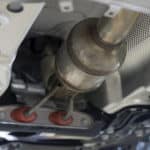
Error code P0420 is not going to cause an immediate risk to your safety, however, it’s generally not advisable to continue driving a vehicle after you discover a P0420 code. If there is a problem with the exhaust system then this will only cause more damage over time. A faulty oxygen sensor is a relatively cheap repair, but left unfixed it can lead to damage to the catalytic converter that may end up costing $1000’s to put right.
2. Will Catalytic Converter Cleaner Fix P0420?u003cbru003e
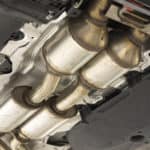
Yes, in some cases cleaning the catalytic converter with a fuel system cleaner might temporarily clear the P0420 code if the problem is caused by dirty injectors or another part of the fuel system. However if the problem is caused by a faulty oxygen sensor or a blocked catalytic converter then a cleaner won’y fix the problem. If there are other codes such as P0166 and P0167 present then it’s likely that a faulty oxygen sensor is to blame.
As an Amazon Associate we earn from qualifying purchases.






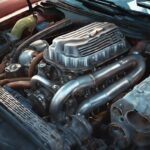
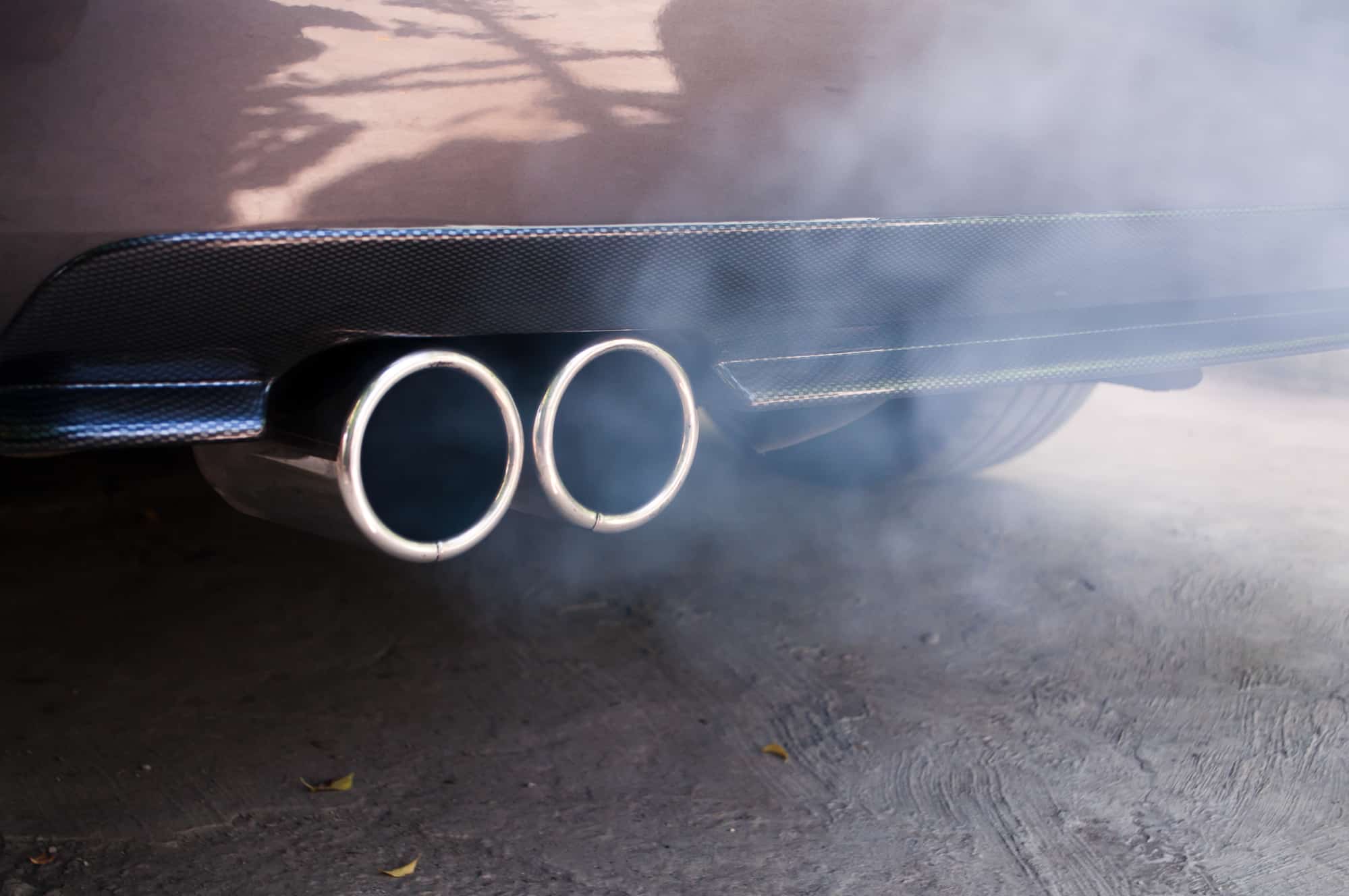





















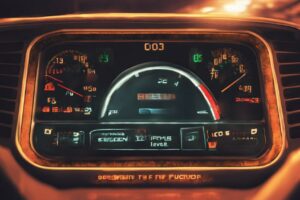

Given the extensive details about diagnosing and repairing engine code P0420, I’m facing a situation where my car has started exhibiting symptoms like reduced fuel efficiency and occasional engine misfires. Considering these symptoms and knowing that my vehicle is a bit older, with over 100,000 miles on the odometer, how can I determine if the issue is with the oxygen sensors or if the catalytic converter itself needs replacement? Is there a specific diagnostic step that can help pinpoint the problem more accurately before I proceed with any replacements?
Is there a DIY method to determine if my catalytic converter is actually the problem behind my P0420 code, or if it’s something else like the O2 sensor?